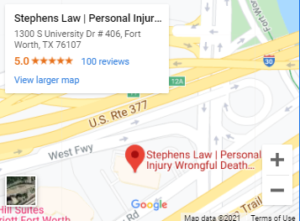Quality of Life

Being injured causes a variety of damages that are compensable under Texas personal injury laws. The negligent party is responsible for compensating the victim for economic damages. Economic damages include out-of-pocket expenses, loss of income, and medical bills.
However, an injury victim may also receive compensation for non-economic damages. These damages relate to the pain and suffering the victim experiences because of the accident and injury. It may include physical pain, emotional distress, and mental anguish.
Pain and suffering damages also include the person’s loss of enjoyment of life or quality of life. The question becomes how you define quality of life and place a value on the diminished quality of living.
Table of Contents
What Does Quality of Life Mean?
A person’s quality of life refers to their physical, emotional, and mental health. It is the general ability to perform activities that contribute to their overall well-being.
Decreases in quality of life generally occur when a person sustains catastrophic injuries that result in permanent impairments.
Injuries that can result in decreases in a person’s quality of life include, but are not limited to:
- Spinal cord injuries and paralysis
- Significant disfigurement
- Traumatic brain injury
- Amputations and loss of limbs
- Loss of vision or hearing
- Injuries to internal organs and loss of bodily functions
- Severe burns and scarring
Any injury that results in life-altering changes to the body or mind has the potential of impacting a person’s quality of life.
What Is Quality of Life in a Personal Injury Claim?
in a personal injury claim, diminished quality of life refers to the impact that an accident and injury have on the victim’s daily life.
Examples of ways that a person’s quality of life may decrease after an injury include:
- Taking care of personal activities of daily living, including bathing, feeding, and dressing yourself
- Ability to participate in sports, recreation, and travel
- Feelings of embarrassment because of an impairment or disfigurement
- Physical discomfort and pain caused by injuries and disabilities
- Mental anguish and emotional distress, including humiliation, chronic depression, fear, severe anxiety, and PTSD
- Loss of a limb or organ
- Being unable to bear children or engage in intimate activities
- Damage to a person’s reputation and feelings of guilt and disgrace
- Being unable to perform physical activities that you did before the injury
- Deformity, mutilation, scarring, and disfigurement
- Loss of companionship, affection, and socializing with other people
Many factors impact our joy of living and mental health. Furthermore, quality of life is subjective. Each person experiences loss of quality of life differently.
For example, a person with a high quality of life may experience significant changes if they become paralyzed. They may not be able to improve their quality of life after the injury.
How Much Are Damages for Reduced Quality of Life?
Many factors could impact a person’s quality of life. Each victim’s life before an injury is unique to that person. Therefore, the same things that influence one claim may not influence another claim.
However, factors that might be considered when calculating the value of diminished quality of life include:
- The injured person’s age
- Work and educational background
- Attempts to mitigate or improve quality of life after an injury
- Personality and social standing
- Activities the person can no longer perform, but greatly enjoyed before the injury
- The type and severity of injuries
- The expected prognosis and future consequences of the injury
- Contributory fault allegations (the victim was partially to blame for the cause of their injuries)
- Where the person lives (geographic location)
- The nature of the at-fault person’s conduct, such as drunk driving, assault, distracted driving, etc.
- The appearance of the injured person before and after the injury
- The health-related quality of life (how injuries impact overall life)
- The need for ongoing health care, especially invasive or painful medical treatments
- Witness testimony
- Disputes related to causation, fault, and liability
There could be other factors that jurors or insurance companies might consider when valuing non-economic damages, including diminished quality of life. This category of damages is judged on a case-by-case basis because there is no standard formula or statutory requirement for valuing non-economic damages.
Damages for Diminished Quality of Life are Compensatory
Even though there is no bill, invoice, or receipt you can use to value pain and suffering damages, non-economic damages are not punitive damages.
Punitive damages relate to the at-fault party’s conduct. They “punish” the at-fault party for gross negligence and intentional wrongdoing. Instead, non-economic damages “compensate” the injured party for the pain and suffering they experience.
You deserve to receive compensation for all damages caused by a negligent party. If you’re suffering from reduced quality of life after an accident, consult with a Fort Worth personal injury lawyer for advice.
Stephens Law Personal Injury | Wrongful Death | Truck Accidents
1300 S University Dr # 300
Fort Worth, TX 76107
(817) 420-7000

